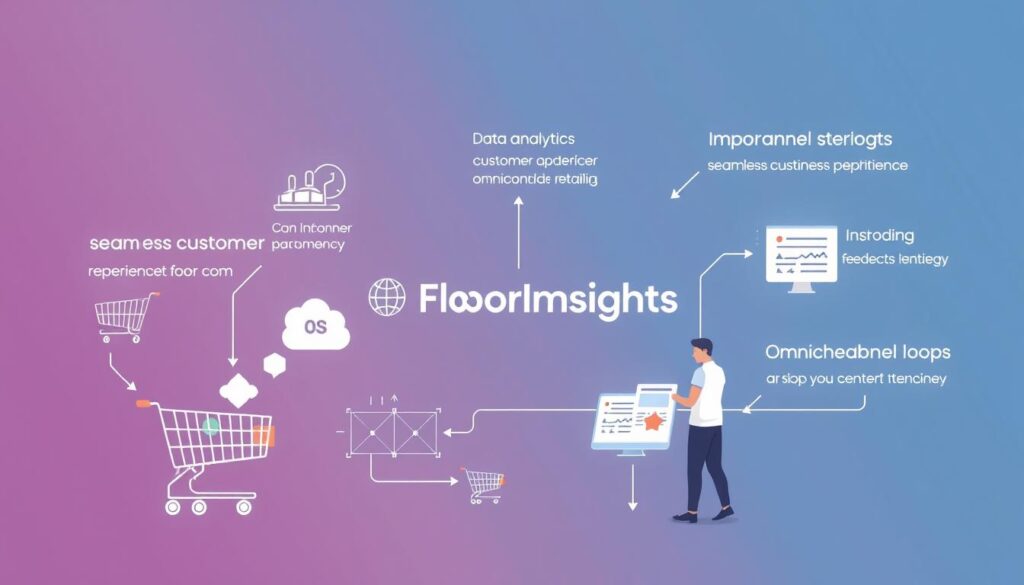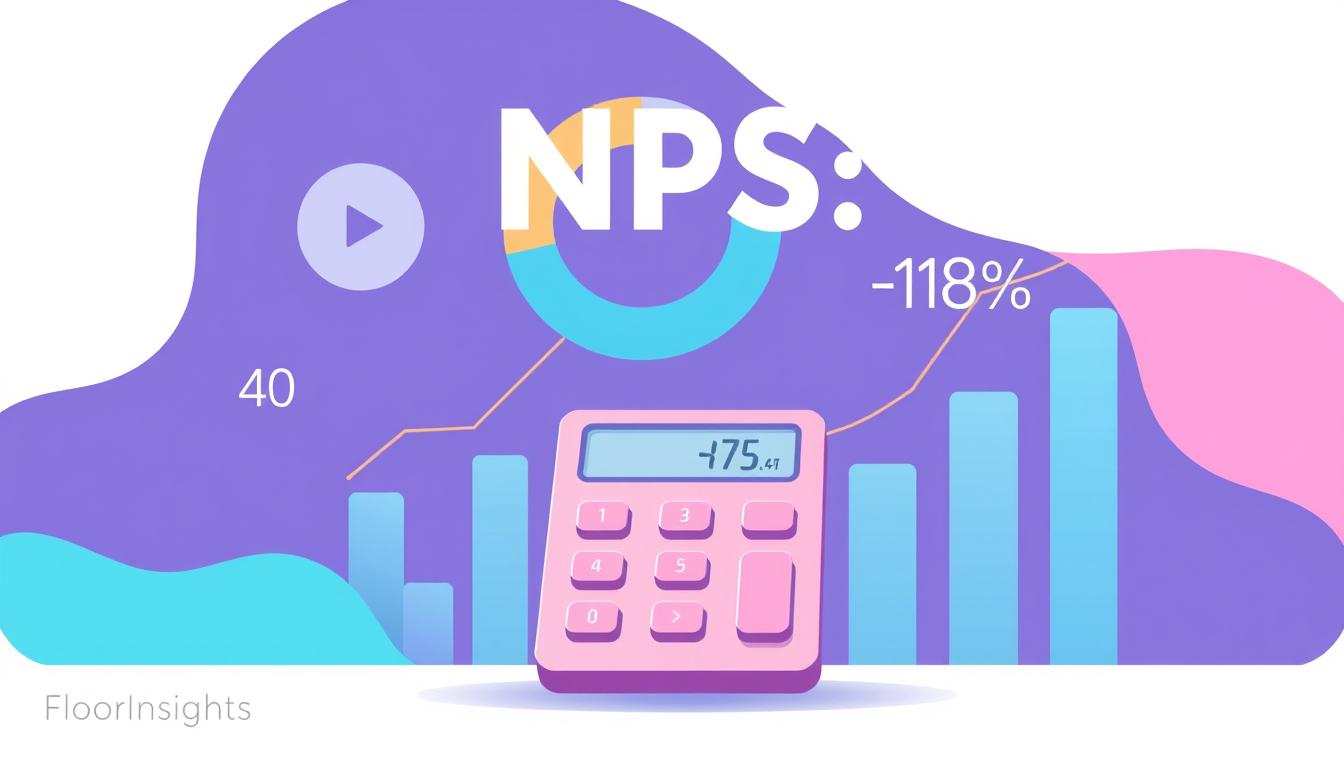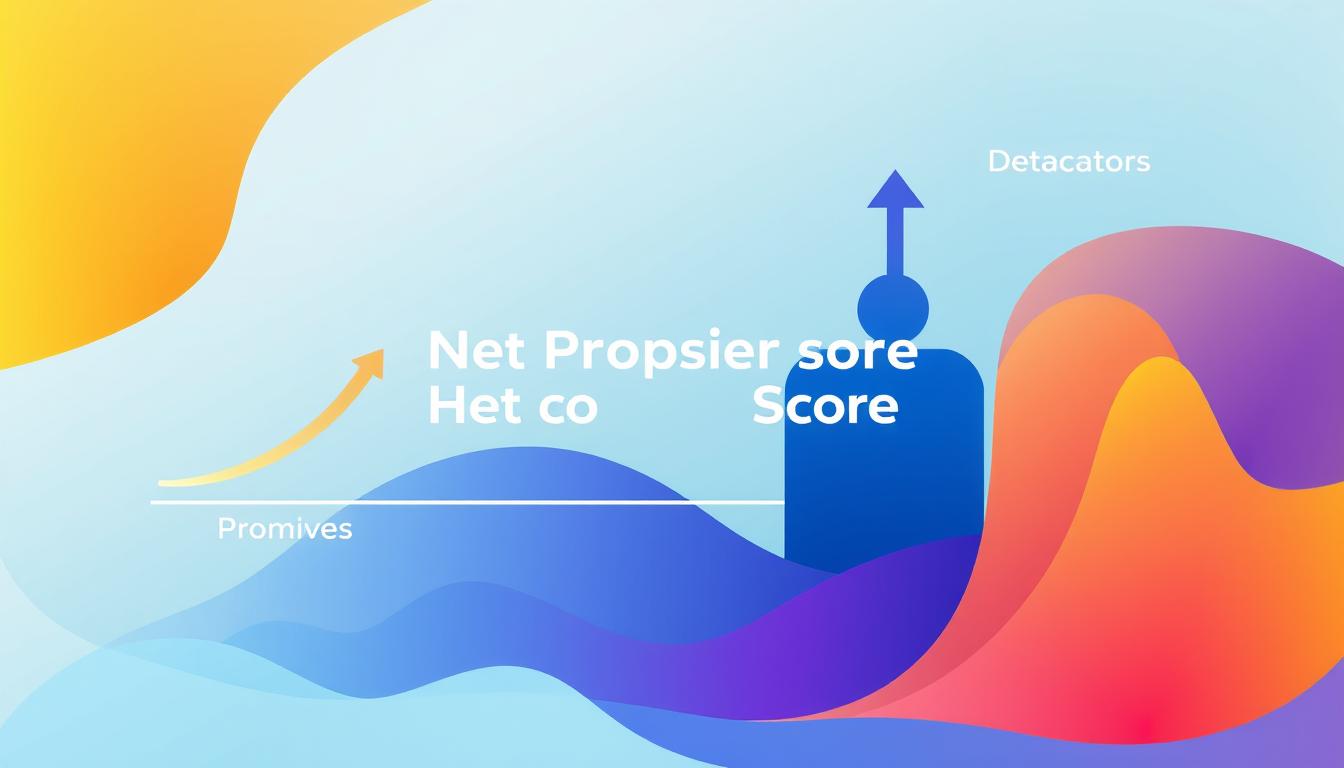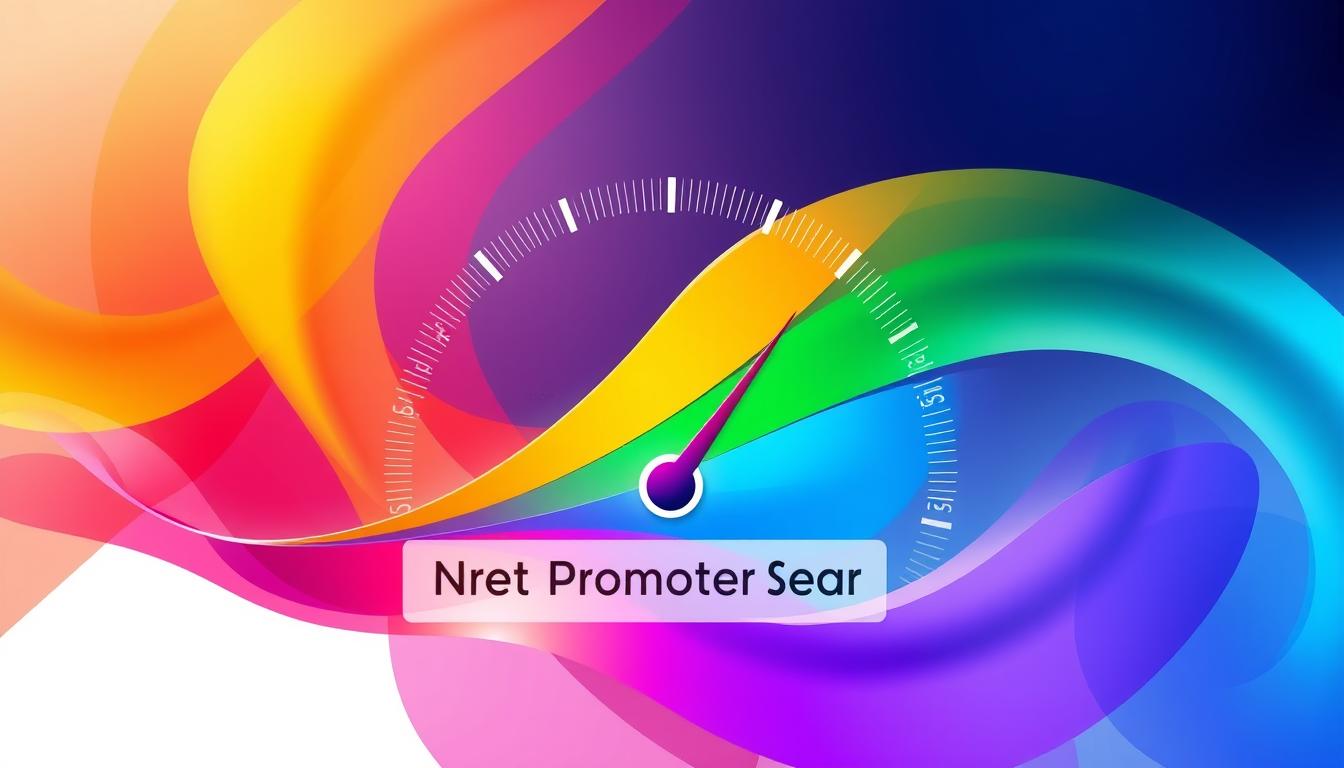In today’s rapidly evolving retail landscape, the importance of understanding customer loyalty and satisfaction cannot be overstated. The Net Promoter Score (NPS) is emerging as a crucial metric for gauging these sentiments. Specifically, in the context of omnichannel retail strategies, NPS provides us with invaluable insights into customer behaviors across various platforms. As we delve into the significance of NPS in retail, we’ll explore how this metric helps enhance customer experiences and drives loyalty in a multi-channel environment. This exploration will set the stage for a deeper understanding of NPS and its transformative potential across the retail sector in India.
Key Takeaways
- NPS serves as a vital tool for measuring customer loyalty in retail.
- Understanding NPS can enhance the effectiveness of omnichannel retail strategies.
- Implementing NPS can help retailers receive real-time customer feedback.
- Integrating NPS metrics can lead to improved customer satisfaction and increased sales.
- Utilizing NPS effectively allows retailers to adapt to changing customer needs.
- NPS data can inform strategic decisions across various retail channels.
Understanding Omnichannel Retail
In the evolving landscape of commerce, omnichannel retail has emerged as a vital component of modern retail strategy. This approach integrates multiple shopping channels, such as in-store, online, and mobile platforms, to create a seamless customer journey. Implementing a comprehensive omnichannel retail strategy allows businesses to connect with their customers at various touchpoints, enhancing overall engagement and satisfaction.
A key characteristic of successful omnichannel retail is consistent messaging across all platforms. This cohesion reinforces brand identity and ensures that customers receive the same information regardless of where they shop. Personalization further improves their experience by tailoring interactions based on individual preferences and behaviors. When customers feel valued and understood, they are more likely to remain loyal to a brand.
We can adopt several strategies to leverage the omnichannel retail model effectively. By analyzing customer data across channels, businesses can identify trends and preferences, allowing for more targeted marketing efforts. Employing technology to track customer interactions enables retailers to refine their approaches and respond swiftly to customer needs.
The Importance of Customer Experience in Retail
In today’s competitive landscape, the significance of customer experience cannot be overstated. We recognize that positive interactions with our brand significantly drive retail success and bolster customer loyalty. Every touchpoint in the retail journey plays a critical role in shaping perceptions, from the first moment a customer engages with our advertising to the final transaction and post-purchase follow-up.
Negative experiences, on the other hand, can severely hinder our efforts. A single unfavorable encounter may lead to a customer reconsidering future purchases, highlighting the imperative of consistently excellent customer experience. To foster strong relationships, we must continually evaluate and enhance all aspects of the customer journey.
Key touchpoints where we can focus our efforts on enhancing customer experience include:
- In-store interactions with sales associates
- Website usability and accessibility
- Customer service responsiveness across channels
- Post-purchase communication and support
By prioritizing customer experience, we not only facilitate customer retention but also lay the groundwork for enduring customer loyalty. When customers feel valued and understood, they are more likely to become advocates for our brand, further contributing to our retail success.
| Touchpoint | Impact on Customer Experience | Influence on Loyalty |
|---|---|---|
| In-store Service | Personal interaction improves satisfaction | High – builds trust |
| Online Shopping | Website design affects ease of use | Moderate to High – convenience fosters loyalty |
| After-sales Support | Timeliness of responses determines satisfaction | High – reassures customers post-purchase |
Ultimately, fostering an exceptional customer experience is a crucial element in achieving retail success and cultivating lasting customer loyalty.
What is Net Promoter Score?
Understanding the Net Promoter Score (NPS) provides valuable insights into customer loyalty within the retail sector. Originating as a simple, yet powerful, tool for measuring customer satisfaction, NPS has grown to play a crucial role in defining company success and strategizing for the future.
Defining Net Promoter Score
The NPS definition centers on a straightforward question posed to customers: “How likely are you to recommend our company/product/service to a friend or colleague?” This question is rated on a scale from 0 to 10, allowing us to gauge customer feelings. Responses categorize customers into three groups based on their scores:
- Promoters (9-10): Loyal customers who are likely to recommend the brand.
- Passives (7-8): Satisfied but unenthusiastic customers, vulnerable to competitors.
- Detractors (0-6): Unhappy customers whose negative feedback can harm brand reputation.
How Net Promoter Score Works
The Net Promoter Score mechanism uses the formula to arrive at a score, calculated by subtracting the percentage of Detractors from the percentage of Promoters. This single metric has tremendous implications for us in the retail landscape, influencing everything from marketing strategies to product development. By consistently measuring NPS over time, businesses discern trends in customer loyalty and satisfaction, informing necessary adjustments to improve their offerings.
The Role of NPS in Customer Loyalty
Understanding the NPS in customer loyalty offers significant insights into how our customers perceive our brands. A high Net Promoter Score indicates that customers are not only satisfied, they are likely to recommend us to others. This aspect plays a critical role in driving customer retention and strengthening our brand’s reputation.
We can utilize loyalty metrics derived from NPS surveys to develop our customer engagement strategies. A direct correlation exists between high NPS scores and robust customer retention rates. When customers feel valued, they tend to return for repeat purchases, thereby directly impacting our bottom line.
Investing time in analyzing NPS data can yield actionable insights. For instance, we can identify common themes among promoters and detractors, allowing us to fine-tune our loyalty programs. By addressing concerns expressed by detractors, we can improve their experience and convert them into loyal customers.
Implementing effective loyalty metrics alongside our NPS strategy allows us to create tailored programs that resonate with our audience. By fostering strong emotional connections, we enhance our customers’ likelihood to choose our brands repeatedly, reaffirming their loyalty over time.
| Customer Group | NPS Score | Likelihood to Recommend | Retention Rate |
|---|---|---|---|
| Promoters | 9-10 | Highly Likely | 85% |
| Passives | 7-8 | Neutral | 65% |
| Detractors | 0-6 | Unlikely | 30% |
Benefits of Using an NPS Survey Platform
Utilizing an NPS survey platform presents various advantages that can significantly transform our approach to customer feedback. These platforms facilitate robust data collection strategies, ensuring that we gather vital insights from our customers in an efficient manner. The ability to collect data systematically enhances our understanding of customer preferences and pain points.
Enhancing Data Collection
Data collection through an NPS survey platform enables us to get structured feedback that is essential for making informed decisions. By automating the collection process, we save time and reduce errors that can occur with manual surveys. Modern platforms offer customizable survey templates, allowing us to tailor questions based on our specific objectives. This flexibility supports our ongoing efforts to implement effective data collection strategies.
Real-Time Feedback Insights
Another significant benefit is access to real-time feedback. Customers today value immediate responses, and an NPS survey platform allows us to quickly analyze the data collected. Immediate insights empower us to identify trends and react promptly to customer sentiments. Adjustments can be made to our strategies based on this immediate feedback, resulting in an overall enhancement of customer experience.

Net Promoter Score Software in Retail
In today’s competitive retail landscape, the utilization of net promoter score software is essential for understanding customer satisfaction and loyalty. By adopting dedicated retail applications, we can streamline our approach to tracking and analyzing this vital metric. These sophisticated tools not only facilitate data collection but also enhance our ability to derive actionable insights.
One of the most significant advantages of using net promoter score software is its capacity for real-time feedback. Retail environments thrive on quick decision-making, and the right analytics tools provide us with instant access to customer opinions. This functionality allows us to swiftly adapt our strategies in response to consumer sentiments.
Leading software solutions often come equipped with features tailored for retail environments. These might include:
- Customizable surveys tailored to specific retail needs
- Integration capabilities with existing retail systems
- Comprehensive reporting tools that simplify analysis
- Visual dashboards for at-a-glance insights
To illustrate the differences among various net promoter score software options, we’ve provided a detailed comparison below:
| Software | Key Features | Target Audience |
|---|---|---|
| SurveyMonkey | Customizable surveys, Email integration, Analytics dashboard | Small to Medium Retailers |
| Qualtrics | Advanced analytics, API access, Automated reporting | Large Enterprises |
| Medallia | AI-driven insights, Real-time feedback, Omnichannel support | All Retail Sizes |
By selecting the right net promoter score software and leveraging its capabilities, we enhance our understanding of customer experiences across various touchpoints. This continual improvement fosters loyalty and supports sustainable growth in our retail operations.
Strategies to Optimize NPS Measurement
Effective NPS measurement forms the cornerstone of robust customer loyalty strategies. To truly understand our customers, we must analyze customer feedback thoroughly. This facilitates the identification of patterns and trends that can guide us in adjusting our offerings. By utilizing effective strategies, we can optimize NPS measurement to ensure we gather precise insights that drive improvements in customer satisfaction and loyalty.
Analyzing Customer Feedback
Customer feedback analysis plays a pivotal role in the NPS improvement strategies we implement. By examining the nuances of customer responses, we can uncover the reasons behind specific scores. This understanding enables us to pinpoint areas needing enhancement. Key steps involve:
- Collecting feedback across various touchpoints.
- Segmenting responses to identify demographic trends.
- Utilizing advanced analytics to translate raw data into actionable insights.
Implementing Changes Based on NPS Results
Once we analyze customer feedback, it is crucial to implement changes based on NPS results. Our approach should focus on making data-driven decisions that align with customer expectations. Strategies include:
- Addressing specific pain points highlighted in feedback.
- Testing new initiatives to gauge their impact on customer satisfaction.
- Communicating changes made to customers to demonstrate responsiveness.
How to Calculate NPS Effectively
To calculate NPS effectively, we start by gathering customer feedback through a simple survey. Asking the question, “On a scale from 0 to 10, how likely are you to recommend our brand to a friend or colleague?” is crucial. This single question serves as the foundation for our calculations.
Once we have collected responses, we categorize the participants into three groups: Promoters (those who rate us 9 or 10), Passives (ratings of 7 or 8), and Detractors (ratings from 0 to 6). The next step involves using the following formula to calculate NPS:
| Category | Score Count |
|---|---|
| Promoters | Count of 9-10 ratings |
| Detractors | Count of 0-6 ratings |
The formula to calculate NPS is:
NPS = (% Promoters – % Detractors)
For example, if we surveyed 100 customers and found that 60 are Promoters and 20 are Detractors, we calculate it as follows: 60% (Promoters) – 20% (Detractors) = 40. The resulting score illustrates our overall customer sentiment.
When using various NPS calculation methods, it’s essential to analyze and interpret the scores based on regional customer behavior and market trends. A high score indicates a strong caller base, while a low score reveals areas needing improvement. We should regularly monitor NPS trends to gauge our performance over time.
Extracting insights from our NPS data helps identify loyal customers and understand their preferences. By choosing the right scoring methods and analyzing customer responses diligently, we can strengthen relationships and drive customer satisfaction.
Integrating NPS in Omnichannel Strategies
Integrating NPS into our omnichannel approach is crucial for enhancing customer experience strategies. By utilizing NPS metrics, we can gather valuable insights across multiple platforms, enabling us to align our services more effectively. This ensures that we provide a consistent experience whether customers engage with us online, in-store, or through mobile applications.
To effectively integrate NPS, we recommend the following steps:
- Align Feedback with Customer Journeys: We should analyze NPS responses to identify which touchpoints need improvement.
- Utilize Cross-Functional Teams: Creating teams that include members from different departments can help in understanding how NPS impacts overall performance.
- Implement Changes: Continuous adjustments based on NPS feedback can drive significant improvements in our customer experience strategy.
- Track Progress: Regularly monitoring NPS can help us measure the impact of implemented changes over time.
This comprehensive integration fosters a superior omnichannel experience for our customers, ultimately leading to enhanced satisfaction and loyalty.
Case Studies of NPS Success in Retail
Numerous brands have harnessed the power of Net Promoter Score (NPS) to enhance customer loyalty and drive business performance. These NPS success stories provide us with valuable insights into the effective application of NPS within the retail sector.
One notable example is the global clothing retailer Zara. By systematically collecting NPS feedback, Zara identified specific areas for improvement in its product lines. The feedback led to quicker inventory turnovers and adjustments in response to customer preferences. The resulting NPS impact significantly enhanced their customer retention rates, showing how closely listening to consumer feedback can reshape a business’s trajectory.
Another compelling case is Amazon. The tech giant utilizes NPS surveys extensively to gauge customer satisfaction across various touchpoints. Continuous improvement based on NPS results has placed Amazon at the forefront of the e-commerce industry. The retail case studies from Amazon highlight the correlation between NPS and increased customer loyalty, ultimately resulting in soaring sales figures.
Target also exemplifies effective NPS implementation. By focusing on NPS feedback during critical shopping seasons, Target refined its promotional strategies. The result was noticeable growth in customer engagement and satisfaction during the holiday shopping rush. These changes, grounded in actionable NPS insights, marked a significant turnaround for the retailer.
Below is a table summarizing these retail case studies, showcasing their approaches and NPS impacts:
| Retailer | Approach | NPS Impact |
|---|---|---|
| Zara | Rapid inventory adjustments based on NPS feedback | Increased customer retention |
| Amazon | Extensive NPS surveys across touchpoints | Elevated customer loyalty |
| Target | Focused NPS feedback during key shopping seasons | Enhanced customer engagement |
These real-world examples illustrate that adopting NPS strategies can lead to measurable improvements in customer loyalty and overall business success. Understanding these retail case studies allows us to appreciate the broader implications of NPS beyond mere numbers. They embody a culture of responsiveness and innovation that can redefine retail practices in a competitive landscape.
Conclusion
As we reflect on the discussions surrounding NPS in our exploration of omnichannel retail, it’s clear that Net Promoter Score serves as a vital tool for understanding customer sentiment. This NPS summary reinforces the compelling relationship between customer experience and long-term loyalty, highlighting how businesses can leverage customer feedback to drive improvements. We see that mastering the principles of NPS not only elevates brand performance but also fortifies customer connections across diverse channels.
Furthermore, the omnichannel retail importance cannot be overstated. In today’s rapidly evolving marketplace, creating a seamless and engaging customer journey is essential for attracting and retaining loyal patrons. By integrating NPS methodologies into our retail strategies, we position ourselves to effectively listen to our customers and make data-driven changes that resonate with their needs.
In conclusion, our commitment to enhancing customer loyalty must be unwavering. The insights gained throughout our analysis serve as a clear roadmap. As we adopt and implement effective NPS practices, we prepare to navigate the competitive retail landscape in India with enhanced confidence and vigor, ensuring that we are always attuned to what our customers truly value.
FAQ
What is Net Promoter Score (NPS)?
Net Promoter Score (NPS) is a metric used to gauge customer loyalty and satisfaction. It measures how likely customers are to recommend a product or service to others and is calculated based on responses to a singular question rated on a scale of 0-10.
How do we calculate NPS?
To calculate NPS, we categorize respondents into three groups: Promoters (9-10), Passives (7-8), and Detractors (0-6). The NPS is calculated by subtracting the percentage of Detractors from the percentage of Promoters.
Why is the NPS important in retail?
NPS is crucial in retail as it helps us understand customer sentiment and loyalty. High NPS scores typically indicate strong customer loyalty, which can lead to increased retention and referrals, ultimately driving sales growth.
What benefits do we gain from using an NPS survey platform?
Utilizing an NPS survey platform enhances our data collection strategies, allowing us to obtain real-time feedback insights. These platforms streamline the feedback process and help us make informed, immediate adjustments to our customer experience strategies.
How does NPS relate to customer experience?
NPS directly correlates with customer experience by providing insights into how our customers feel about their interactions with our brand. Understanding their feedback allows us to improve touchpoints across the customer journey, fostering better satisfaction and loyalty.
What software solutions are available for tracking our Net Promoter Scores?
There are various net promoter score software solutions designed specifically for retail. These tools assist us in gathering, analyzing, and reporting NPS data, enabling us to derive actionable insights that can enhance our customer loyalty strategies.
How can we implement changes based on NPS results?
We can analyze customer feedback gathered from our NPS surveys to understand the reasons behind the scores. Implementing changes based on this feedback, combined with a commitment to improving customer satisfaction, will help us optimize our offerings and enhance overall customer loyalty.
What are practical strategies for optimizing our NPS measurement?
Effective strategies for optimizing NPS measurement include regularly analyzing customer feedback, aligning it with our customer experience goals, and making data-driven adjustments to enhance satisfaction. This approach ensures that we remain responsive to our customers’ needs.






